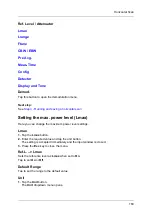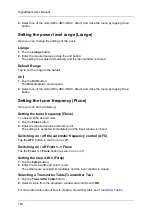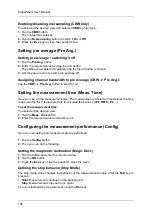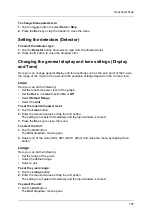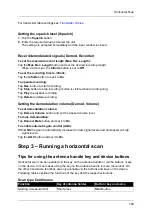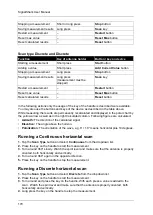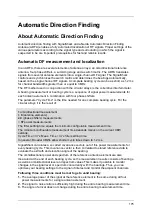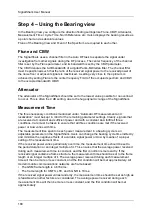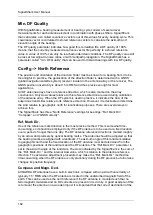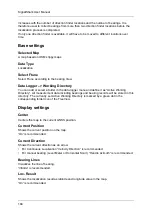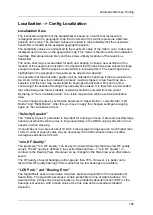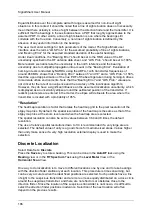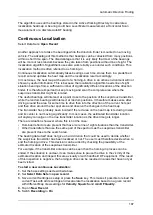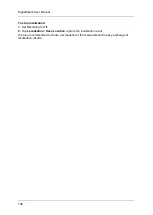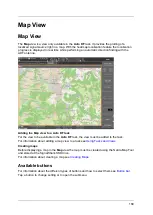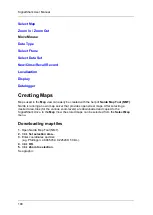
175
Automatic Direction Finding
About Automatic Direction Finding
Automatic direction finding with SignalShark and a Narda Automatic Direction Finding
Antenna (ADFA) enables a fully automated localization of RF signals. Proper settings of the
various parameters according to the signal type and surrounding in which the signal is
suspected to be are important prerequisites for fast and reliable results.
Automatic DF measurement and localization
In an ADFA, there are several elements of antenna arrays, an omnidirectional reference
antenna, four phase shifters, a summing stage and a switch matrix. The ADFA translates
signals from several antenna elements into a single-channel DF signal. The SignalShark
controls and synchronizes the switch matrix and determines the bearings automatically,
based on the single-channel DF signals. A complete bearing cycle can be as short as 1.2 ms
for channel bandwidths greater than or equal to 3 MHz.
The DF method used in conjunction with the circular arrays is the correlative interferometer.
A bearing measurement or bearing cycle is a sequence of signal power measurements for
each antenna element in combination with four phase shifters.
The parameter "Cycle Time" is the time needed for one complete bearing cycle. For the
circular arrays it is the result of:
1
omnidirectional measurement
+ 9
(antenna elements)
x 4
(phase shifters) measurements
=
37
power measurements
The filter settling time equals the minimum configurable measurement time.
The minimum configurable measurement time depends mainly on the current CBW
settings.
Cycle Time = 37 x Meas. Time + 37 x filter settling time.
In general: Broader CBWs allow shorter cycle times down to 1.2 ms.
SignalShark calculates a so called covariance vectors out of this power measurements for
every bearing cycle. This covariance vector is then correlated to stored reference data to
evaluate the azimuth and elevation angle of the bearing.
The omnidirectional power and spectrum of the reference antenna element are also
measured at the end of each bearing cycle, so the measurement results consists of bearings,
as well as omnidirectional level and spectrum values This makes it possible to monitor
changes in the signal level or spectrum concurrently with the bearings. Thus, you can
optimize your bearing settings to the signal of interest and monitor the adjacent channels.
Following three conditions must be met to get a valid bearing:
1.
The average power of the signal at the reference element is the same during all four
power measurements for a single antenna element.
2.
The signal to noise ratio is sufficiently high during the entire bearing measurement time.
3.
The angle of arrival does not change during the entire bearing measurement time.
Summary of Contents for Narda SignalShark
Page 1: ...User Manual Version 2019 07 ...
Page 2: ......
Page 14: ......
Page 15: ...15 Online Help Version 2019 07 ...
Page 16: ......
Page 31: ...Introduction 31 Figure Loop antenna frequency range 9 kHz to 30 MHz ...
Page 32: ......
Page 38: ......
Page 44: ......
Page 60: ......
Page 66: ......
Page 74: ......
Page 88: ......
Page 104: ......
Page 118: ......
Page 132: ......
Page 158: ......
Page 198: ......
Page 204: ......
Page 214: ......
Page 226: ......



